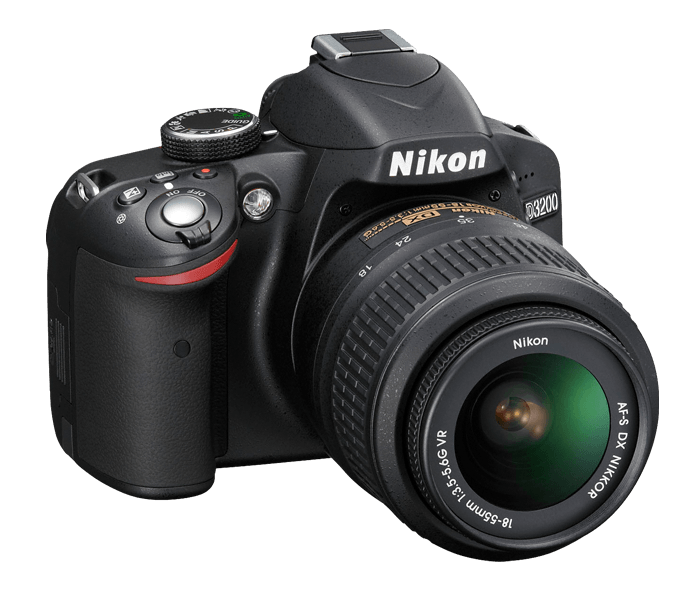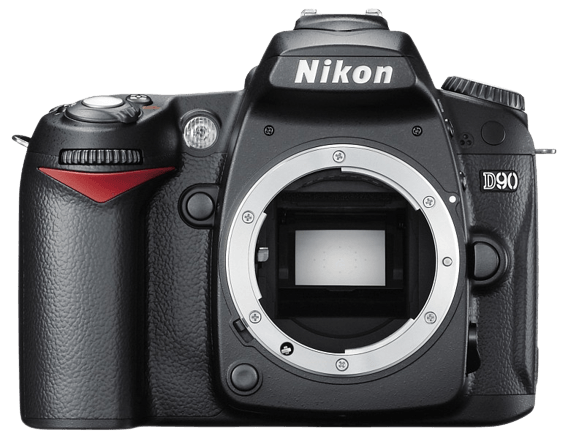Nikon D3200 vs D90 Comparison
Nikon D3200

Nikon D90

The Nikon D3200 outperforms the Nikon D90 with a score of 54/100 compared to 44/100. Both cameras are DSLR models, released in 2012 and 2008 respectively. They share similarities in size, with the D3200 measuring 125 x 96 x 77mm and the D90 at 132 x 103 x 77mm. However, the D3200 is lighter, weighing 505g while the D90 weighs 703g.
The D3200’s higher score reflects its better performance, offering users a more advanced and reliable camera. In contrast, the D90’s lower score and older release date reveal its outdated technology, despite its higher launch price of $1235 compared to the D3200’s $699.
Considering these points, the Nikon D3200 is the superior camera with better specifications and a more reasonable price. The Nikon D90 may still appeal to some users due to its familiar design, but the D3200’s advantages make it a better choice for most photographers.
Nikon D3200 vs D90 Overview and Optics
The Nikon D3200 outperforms the Nikon D90 in optics with a score of 63/100 compared to the D90’s 46/100. Both cameras share some common specifications, such as the CMOS sensor type, APS-C sensor size, Nikon F DX lens mount, and the lack of image stabilization. However, the D3200 has a clear advantage in certain areas, making it the better choice for optics.
The D3200 boasts a higher megapixel count at 24.2, compared to the D90’s 12.3. This difference allows the D3200 to capture more detail in images and produce higher resolution photos. Additionally, the D3200 has a more advanced processor, the Expeed 3, which contributes to faster image processing and better performance in low light conditions. The D3200’s sensor also has a higher DXOMARK score of 81, compared to the D90’s 73, indicating better overall image quality.
On the other hand, the D90 has a slightly faster shooting speed of 4.5 frames per second compared to the D3200’s 4. This advantage may be beneficial for capturing fast-moving subjects or shooting sports events, but the difference is not significant enough to outweigh the other advantages of the D3200.
Considering all these factors, the Nikon D3200 is the superior camera in terms of optics. Its higher megapixel count, more advanced processor, and better sensor performance make it a better choice for capturing high-quality images. While the D90 has a minor advantage in shooting speed, this does not compensate for its lower overall performance in optics.
Nikon D3200 vs D90 Video Performance
When comparing the video capabilities of the Nikon D3200 and the Nikon D90, it is important to note that the Nikon D90 does not have any video functionality. Therefore, this comparison will focus on the video capabilities of the Nikon D3200.
The Nikon D3200 has a video score of 43 out of 100. This camera offers Full HD video recording with a maximum resolution of 1920 x 1080. The highest video frame rate available on the D3200 is 30 frames per second. Unfortunately, the Nikon D3200 does not have built-in time-lapse functionality.
Comparing the Nikon D3200 and the Nikon D90, it becomes clear that the D3200 has the advantage when it comes to video capabilities, as the D90 does not offer any video recording options. With Full HD resolution and a 30fps frame rate, the Nikon D3200 provides users with a decent video recording option, despite lacking time-lapse features.
Nikon D3200 vs D90 Features and Benefits
The Nikon D3200 and Nikon D90 both have a feature score of 41 out of 100, making them equal in terms of additional camera features. In this comparison, there is no clear winner based on the feature score alone. Both cameras share several specifications, such as a 3-inch screen size, absence of a touchscreen, flip screen, GPS, WiFi, and Bluetooth.
Despite having the same feature score, the Nikon D3200 has an advantage in screen resolution with 921,000 dots compared to the Nikon D90’s 920,000 dots. This difference, although minor, provides the D3200 with a slightly sharper display for image preview and menu navigation.
On the other hand, the Nikon D90 does not have any significant advantages over the D3200 in terms of features. Both cameras are on equal ground when considering their specifications.
Taking into account the similarities and minor differences in features between the Nikon D3200 and Nikon D90, it is clear that neither camera outperforms the other significantly. The choice between these two cameras should be based on other factors such as price, user experience, and personal preference. The Nikon D3200’s slightly better screen resolution might appeal to some users, while others may prefer the familiarity of the Nikon D90. Ultimately, the decision lies with the individual photographer and their specific needs and preferences.
Nikon D3200 vs D90 Storage and Battery
The Nikon D90 outperforms the Nikon D3200 in storage and battery, scoring 37/100 compared to the D3200’s 27/100. Both cameras have one memory card slot, and neither offers USB charging. They also share compatibility with SD and SDHC memory cards. However, the D3200 has an advantage in accepting the more advanced SDXC cards and being UHS-I compatible.
The D90’s superior battery life sets it apart, providing 850 shots per charge, while the D3200 only manages 540 shots. This difference is due to the D90 using the EN-EL3e type battery, whereas the D3200 uses the EN-EL14 type. The D90’s longer battery life makes it more suitable for extended shooting sessions or situations where recharging is not possible.
Despite the D90’s higher score and longer battery life, the D3200’s compatibility with advanced memory cards is a notable advantage for users who require faster data transfer speeds and larger storage capacities. Ultimately, the D90’s superior battery life makes it the better choice for those prioritizing longevity, while the D3200’s storage capabilities cater to users with high-speed and high-capacity needs.
Nikon D3200 vs D90 – Our Verdict
Are you still undecided about which camera is right for you? Have a look at these popular comparisons that feature the Nikon D3200 or the Nikon D90:

